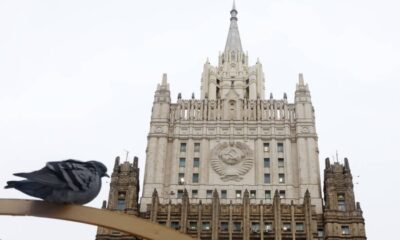Global Issues
The Black Death -By Lukuman Tajudeen
In summary, the Black Death was a devastating pandemic that killed millions of people across Europe and Asia. It had a profound impact on society, leading to changes in economic and social structures, as well as religious beliefs. The Black Death also led to the development of new medical practices and increased sanitation efforts. Despite its terrible toll, the Black Death also spurred on significant scientific, social, and political change.

The Black Death was one of the most catastrophic pandemics in the history of humankind. It traced back to Asia and flew across trade routes, penetrating in the Europe started in the 14th and lasted in the 17th century. it’s estimated that black death killed one -third of the Europe population .there was a several large outbreak such as Marseille in France in 1720 and Great plague of London In 1665. Research had clearly pointed Out that black death killed more than 75 million over the course of three centuries. it consumed an estimated 30-60% of the population in Europe, causing gigantic social and economic crises. People were terrified of the mysterious disease, and many turned to religion in order find out the solution. The Black Death had lasting effects on Europe, including a decline in the power of the Church and a rise in the power of the state. It also led to improvements in hygiene and sanitation.
The Black Death caused widespread panic and fear, as people were desperate to find a cure. They turned to a variety of folk remedies, including wearing amulets and drinking potions made from herbs, animal blood, and even human urine. Many people believed that the plague was a punishment from God for their sins, and they flocked to religious ceremonies and processions, yearning for a Astonishment. The Church, struggling to cope with the crisis, struggled to provide spiritual guidance to a fearful populace. Despite their efforts, the plague continued to spread, devastating entire communities .With death all around them, people started to question the teachings of the Church. Some even blamed the clergy for the Black Death, claiming that they were being punished for their corruption and greed. While some even accused Jews claiming that there were one who plotted poison in the well. The Catholic Church was already facing challenges, including the growth of new sects like the Lollards in England and the Hussites in Bohemia( modern – day Czech republic) in the 15th century. With death all around them, people started to question the teachings of the Church. Some even blamed the clergy for the Black Death, claiming that they were being punished for their corruption and greed. The Catholic Church was already facing challenges, including the growth of new sects like the Lollards in England and the Hussites in Bohemia. The Black Death further weakened the Church’s authority, and many people turned away from traditional religion. On the other hand, the plague also led to a rise in mysticism and superstition, with people seeking out “witches” and healers to help them escape the deadly disease.
Aside from the spiritual and religious impact of the Black Death, it also had far-reaching economic and social consequences. With so many people dying, there was a labor shortage across Europe. This led to a rise in wages for those who survived the plague, as well as a decline in the power of the nobility. Peasants, who had previously been bound to the land, began to demand more rights and freedoms. These changes, as well as the economic devastation caused by the plague, helped to spark the Peasants’ Revolt of 1381 in England. The Peasants’ Revolt was just one of many social upheavals that followed the Black Death. In France, the Jacquerie, a revolt of peasants and laborers, broke out in 1358. In Italy, a new class of wealthy merchants emerged, challenging the old feudal order. In Germany, the cities of the Hanseatic League grew in power and influence. And in Spain, the Reconquista, the Christian reconquest of the Iberian Peninsula, intensified. These and other social and political changes were all, in some way, a result of the devastation caused by the Black Death.
The Black Death not only transformed society, but it also had a profound impact on art and culture. Many artists, confronted with so much death and suffering, began to create works that reflected the horrors of the plague. One of the most famous examples is the “Dance of Death” or “Danse Macabre,” a genre of art depicting the universality of death, regardless of one’s social status.
The Black Death had a profound impact on the development of the Renaissance. The combination of the devastation caused by the plague and the social and economic changes that followed led to a new interest in secularism, humanism, and individualism. The concept of humanism, which emphasized the importance of human reason and the dignity of man, emerged during this period. And the development of individualism, with a focus on the individual rather than the group, also began to take shape. These ideas would have a lasting impact on art, literature, and philosophy.
The rise of individualism and secularism during the Renaissance also led to a new approach to art and literature, known as realism. Realism focused on depicting everyday life, with an emphasis on the details of the physical world. The Italian painter Masaccio is often credited with being one of the first artists to adopt this approach. His frescoes, such as “The Tribute Money” and “Expulsion from the Garden of Eden,” are highly realistic and focus on the emotions and experiences of the people depicted. This style would go on to influence later artists, such as Leonardo da Vinci and Michelangelo.
In summary, the Black Death was a devastating pandemic that killed millions of people across Europe and Asia. It had a profound impact on society, leading to changes in economic and social structures, as well as religious beliefs. The Black Death also led to the development of new medical practices and increased sanitation efforts. Despite its terrible toll, the Black Death also spurred on significant scientific, social, and political change.




















